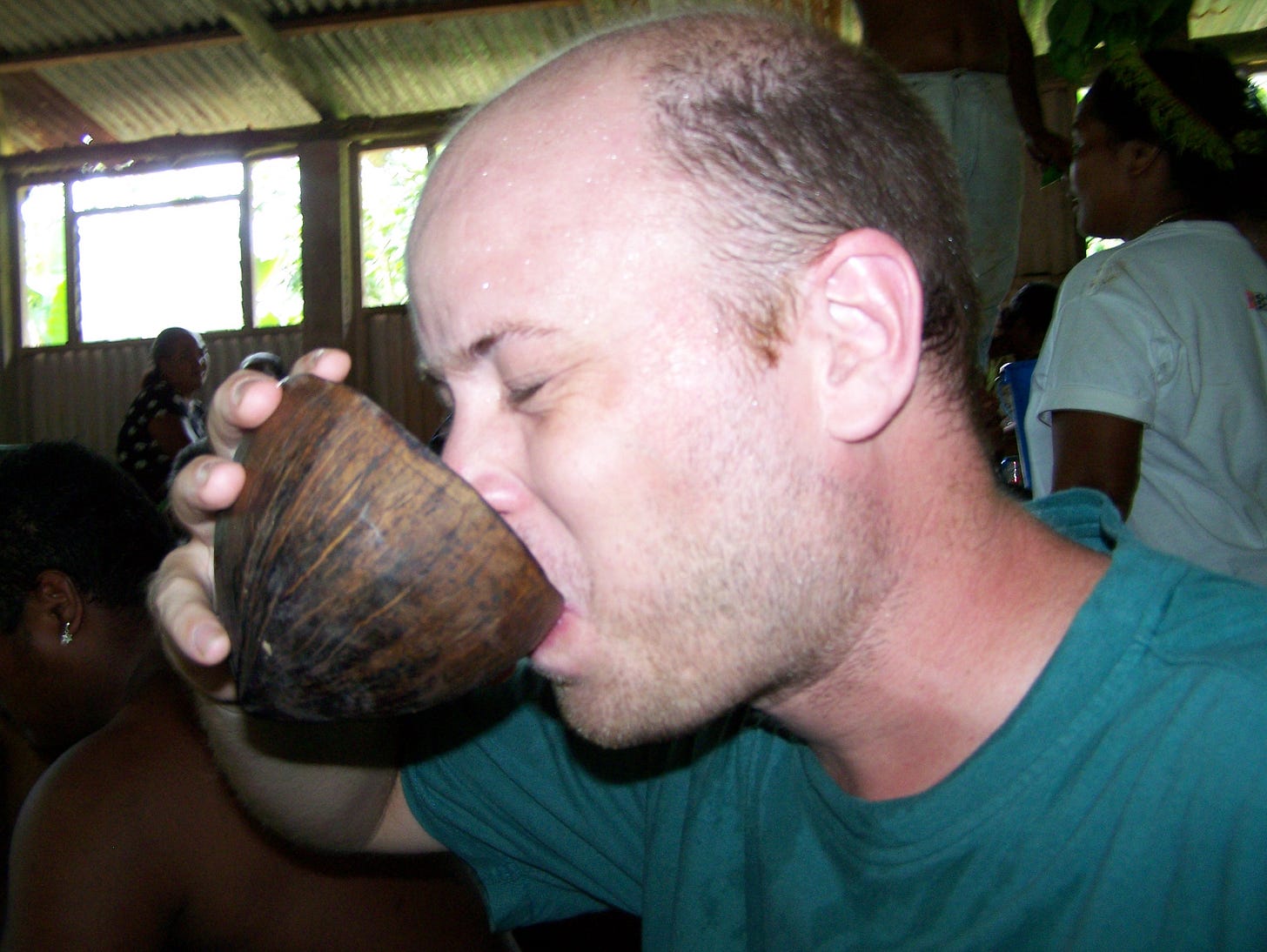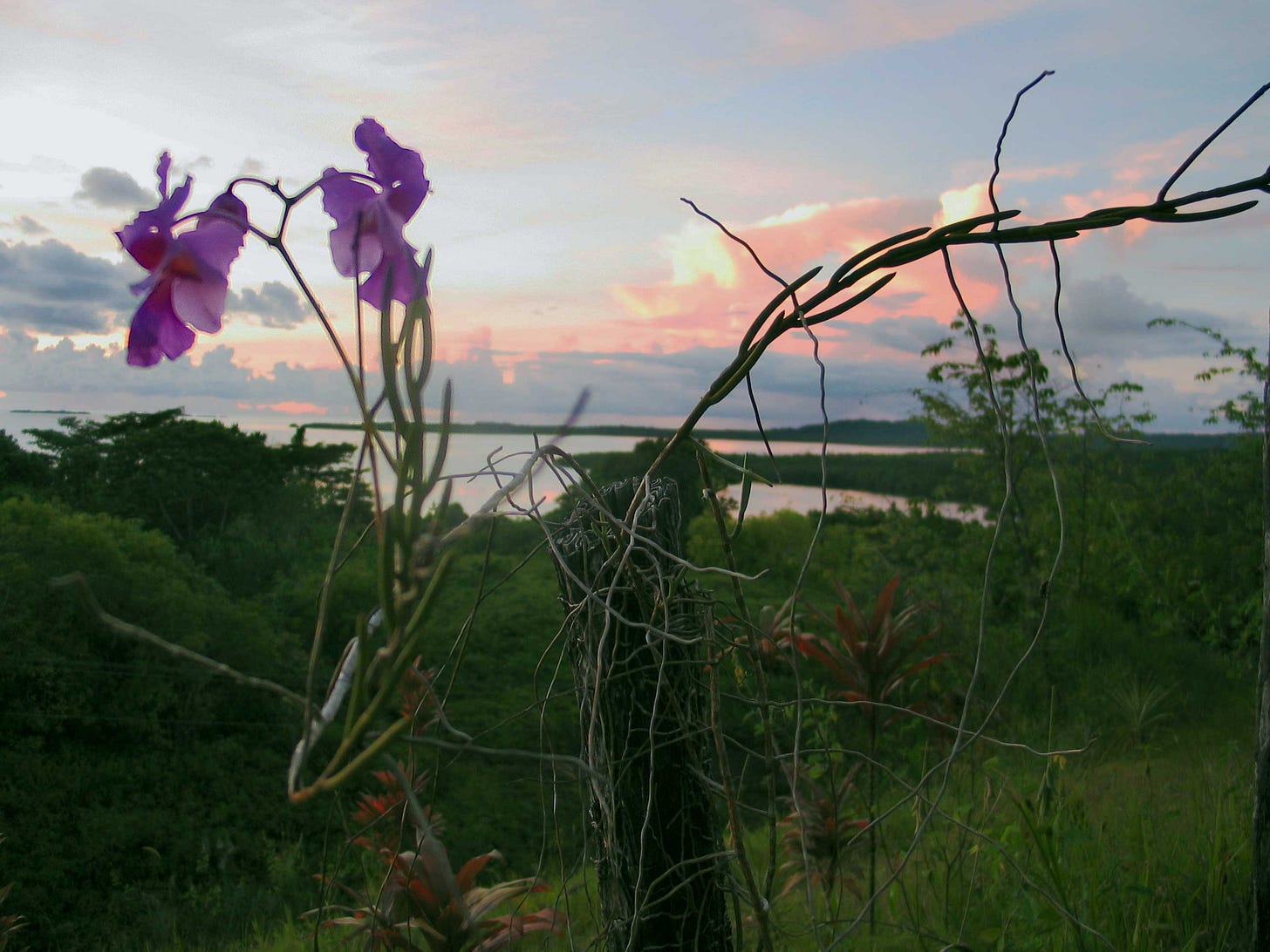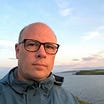Election Day Distraction: Traditional Medicine Cured My Ingin
In which my husband talks of magic and medicine in Micronesia
I know readers in the U.S. are obsessed with one thing right now: the election. Here’s a little mental health break. I’ve invited a guest to write this week’s post.
My husband Jonathan Gourlay spent 11 years on the island of Pohnpei, in the Federated States of Micronesia. Whether or not something is a magic (or silver) bullet for what ails you is in the eyes of the beholder. I’ll let Jonathan’s essay about traditional medicine there tell you the rest.
Jonathan drinking the kava-based sakau from a coconut on Pohnpei.
The most important facet of traditional medicine rests, I think, within the word traditional. Tradition is a way of living, of orienting oneself to the body, to society, and to nature. One that evolves in a place over centuries. Tradition cannot be packaged and sold. To take the medicine from its context, in the form of kava pills for example, is to make it a thing: a marketable substance. That is, to drain its magic.
The only thing I can confidently say about traditional medicine is that you cannot buy it in a store. And it cured my ingin.
I felt a similar shift in myself when I left the Micronesian island of Pohnpei, where I had been the target of bad magic. So I was told, anyway. Whether I was hexed or not, I sensed an ephemeral but perceptible change when the plane took off. Was it a change in cabin pressure or the lifting of a spell? I looked past the wing at the brilliant green dot of Pohnpei in the blue Pacific. Whatever spells were woven there could not be cast elsewhere. The potency is the tradition. The efficacy is in the place and people.
Sometimes a cure was a plant, and words, and touch, and a special healer with special knowledge. Sometimes a powerful person played tricks. Spoke to stones and left them at the doorstep. Bad magic.
Perhaps it is strange to conflate magic and medicine. I can only say that, to me, those things existed not as two separate ventures but as part of a continuum. Sometimes a cure was a plant; straightforward medicine. Sometimes a cure was a plant, and words, and touch, and a special healer with special knowledge. Sometimes a powerful person played tricks. Spoke to stones and left them at the doorstep. Bad magic.
The view from Jonathan’s home on Pohnpei.
Below is the fourth “leaf” of an essay about my interactions with traditional medicine. It’s a personal essay and it makes no claims as to the use of traditional medicine nor does it seek to compare it to any other way of healing. To give you an idea of how traditional medicine intersects with everyday life in Pohnpei here are the topics of all eight leaves of the essay. Medicine is used:
To make childbirth easier
To make a baby healthy
To forget something traumatic
To heal something that can be healed
To help a child deal with change
To fix a sore back
To understand what is happening to you
To calm mental pain from a divorce
These eight examples merely scratch the surface of the myriad ways in which plants, nature, and social structures interact in traditional Pohnpeian medicine. Not to mention how this tradition interacts with high-speed internet, American politics, changing diets, changing climate…
The only thing I can confidently say about traditional medicine is that you cannot buy it in a store. And it cured my ingin.
The fourth leaf only works if it is the kind of leaf that works
There is a bright red growth underneath the nail of my pinky finger. A boil? I’ve had those by the dozens and it doesn’t feel like a boil. It’s angrier, redder, sharper… the pain is unbearable. I lie in bed with this pinky injury, feeling ridiculous. My wife and her mother say that this is bad magic. Somebody doesn’t like me and they’re playing magic. There is little other explanation for my recent unrelenting bout with staph infection and now this… whatever it is growing underneath my fingernail. Popo’s mother applies a poultice of pounded limenkasar leaves to my boils. The poultice draws the greenish white pus to the surface of the skin and forms the eye of the boil. But she pronounces my finger beyond her capabilities.
So, we drive up a mountain until the road becomes two deep, muddy ruts. We get out and walk, following a haphazardly thrown up electric wire into the jungle. Up here is where the old man lives. This old man is going to cure my pinky finger.
The old man lives in a small shack with his wife. His wife has lost both of her legs to diabetes. She is lying on a wooden platform, a place she has not moved from in months. She props herself up with her hands to greet us. Behind her a television is blaring a DVD of a Benny Hinn revival meeting in Fiji.
The old man takes my hand, puts his ancient lips near my diseased pinky and whispers. I want to giggle. An old man has never spoken to my pinky before. The pain is great enough, however, that I’m willing to go with it. He blows on my finger then lets go of my hand and looks at me. Is it over? Was that it?
“You have ingin,” the old man declares.
“What’s ingin?” I ask.
“It’s what you have.”
He fixes me in his gaze. I guess the treatment is over.
“But what if my finger doesn’t get better?” I ask.
“Then it’s not ingin,” he says.
My finger got better, proving that it was ingin.
--
This excerpt was written by Magic Silver Bullet guest writer Jonathan Gourlay. You can read the whole essay here. You can buy the short e-book this is taken from here.








This is such a great read! Thanks for sharing, Dr. Jonathan! How interesting.. medicine and magic.